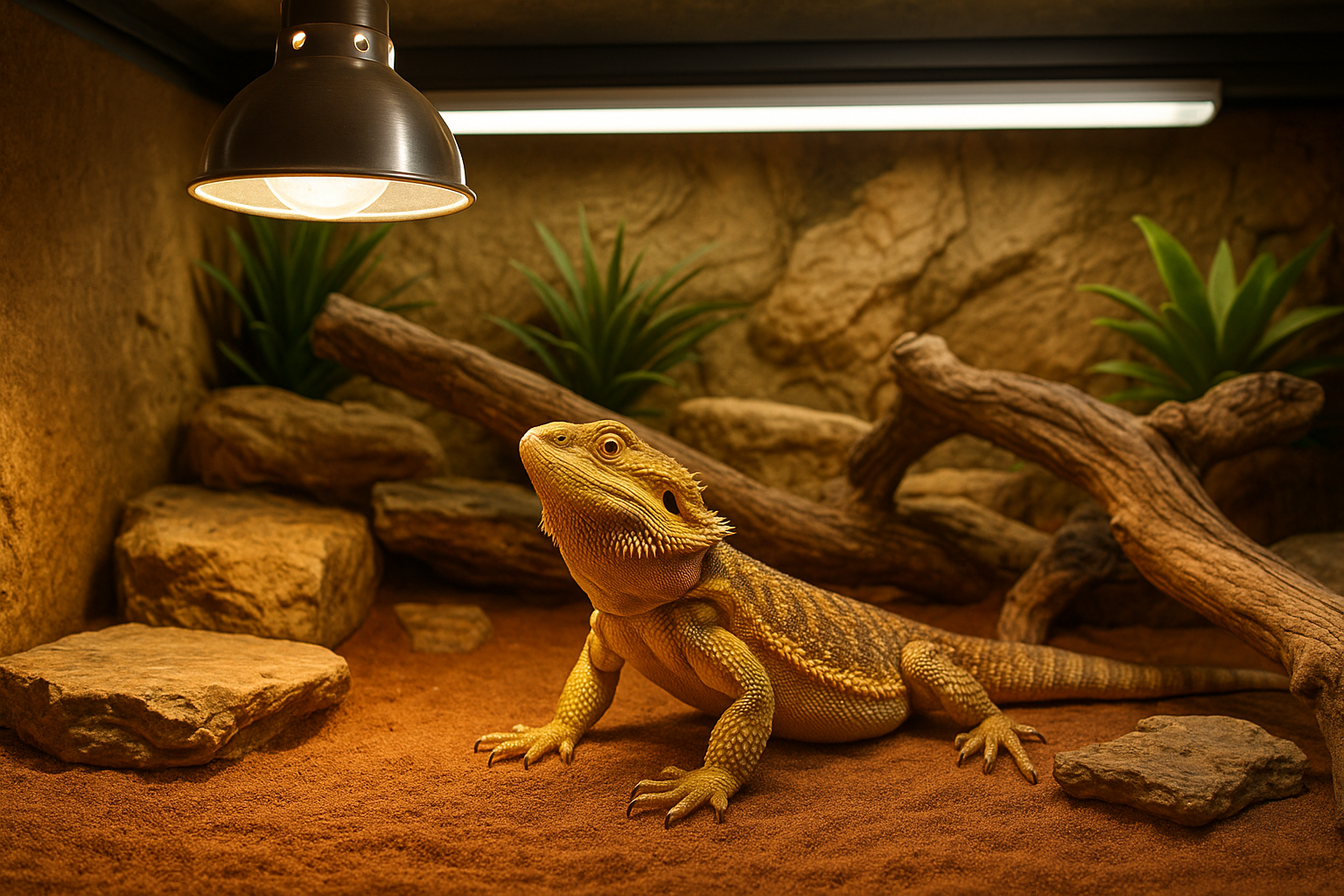Caring for reptiles at home is both rewarding and fascinating. To ensure their health and longevity, it’s essential to replicate their natural habitat with precision. This guide covers everything you need to know to create an ideal setup for species like bearded dragons, leopard geckos, chameleons, ball pythons, iguanas, and tortoises.
Choosing the Right Enclosure
Size and Layout Matter
Reptiles need space not just to move, but to express natural behaviors. Enclosure size should reflect the species’ size, activity level, and whether they are arboreal, terrestrial, aquatic, or fossorial.
Recommended minimum sizes:
- Leopard Gecko: 24″ x 16″ x 16″
- Chameleon: 36″ x 18″ x 36″ (vertical space is essential)
- Bearded Dragon: 48″ x 24″ x 24″
- Ball Python: enclosure width = ⅔ of total length
- Tortoises: large enclosures or secure outdoor pens
Enclosure Type
Glass terrariums are common, but mesh or PVC hybrids are often better for ventilation and temperature retention. Choose one that matches the humidity and heating needs of the species.
Lighting: Why UVB Is Essential
UVB for Vitamin D3 Synthesis
Most reptiles need UVB lighting to synthesize vitamin D3, which helps them metabolize calcium. Without it, they risk developing metabolic bone disease.
- Use 10.0 UVB bulbs for desert species
- Run lights 12 hours per day on a timer
- Replace bulbs every 6–12 months
Supplemental Lighting
Use white LED or daylight-spectrum bulbs for visibility. At night, ceramic heat emitters are ideal to maintain warmth without disrupting the reptile’s circadian rhythm.
Heating Zones and Temperature Control
Basking and Gradient Zones
All reptiles need a temperature gradient. The basking area allows them to thermoregulate, while a cooler side offers relief.
Example temperature ranges:
- Bearded Dragon: 100–108°F basking, 75–85°F cool side
- Leopard Gecko: 88–90°F warm side, 74–78°F cool side
- Chameleon: 85–90°F basking, 72–78°F ambient
Use digital thermometers on both sides, and thermostats to prevent overheating.
Managing Humidity
Target Humidity Levels
Every reptile species has different humidity needs. Too much can cause respiratory issues, while too little can lead to shedding problems.
- Chameleons & Iguanas: 60–80%
- Leopard Geckos & Bearded Dragons: 30–40%
- Ball Pythons: 60–70%
Use a hygrometer, and control humidity with misting systems, foggers, or water bowls on the warm side.
Choosing the Right Substrate
Safe and Functional Options
The substrate should replicate natural environments and support hygienic conditions.
Best options include:
- Reptile carpet (washable and reusable)
- Paper towel or newspaper (especially for juveniles or quarantine)
- Coconut fiber or topsoil mix (for burrowers and tortoises)
- Calcium-based sand (only with supervision and species-specific approval)
Avoid: cedar, pine, gravel, and silica sand due to toxicity and ingestion risks.
Enrichment and Hiding Spaces
Encouraging Natural Behavior
Reptiles thrive when they can explore, climb, hide, and bask naturally.
Additions to include:
- Logs and branches for climbing
- Basking rocks under the heat lamp
- Two hide boxes (warm and cool side)
- Non-toxic live or artificial plants
- Shallow soaking dishes for hydration and humidity support
Switch up décor occasionally to stimulate interest.
Safety and Maintenance
Daily and Weekly Habits
Reptile care includes more than feeding. Cleanliness and observation are essential.
- Secure the enclosure with locks or clamps
- Keep the tank away from direct sunlight
- Spot-clean daily, deep-clean weekly
- Refresh drinking water every 24 hours
- Watch for signs of illness (lethargy, refusal to eat, poor shedding)
Conclusion: Reptile Enclosures Are More Than Just Tanks
Creating the perfect environment for your reptile goes far beyond aesthetics. It’s about offering a life of health, comfort, and natural expression. With proper lighting, heat, humidity, substrate, and enrichment, your reptile will not just survive — it will thrive.
This is how you go from being a pet owner to a responsible reptile keeper.

